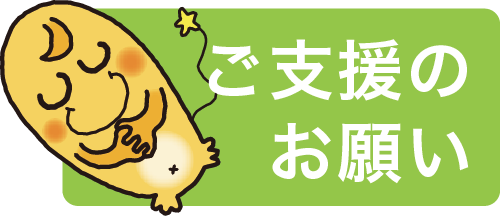‘Human Animal Bond Lecture Workshop : Tiger Place and Representative Animal Therapy Activities in Japan’
Workshop2 Organizer’s Message from JAHA
The Japanese Animal Hospital Association (JAHA) was established in January 1978 and was reorganized as a non-profit organization authorized by the Ministry of Health and Welfare (the present Ministry of Health, Labour and Welfare) in November 1987. In 2009, the Cabinet Office certified the JAHA as a public interest corporation, its current status. The JAHA is an association of animal hospitals that seeks to make a social contribution by conducting medical treatment to help maintain the existing emotional ties between people and animals. Specifically, it carries out the following public-interest projects.
• On-going education projects for improving animal hospitals and animal medical treatment
• Projects related to grant qualifications for professionals concerning animal hospitals and animal medical treatment
• Projects for promoting contributions by animal hospitals to local society
• Projects for promoting animal therapy (CAPP visit activities)
• Animal therapy-related survey research projects
Among the five above-listed projects, activities aimed at promoting interaction between people and animals are carried out as part of the project for promoting animal therapy (CAPP visit activities). These activities started in May 1986 and have been carried out on approx. 13,000 occasions up to the present time.
The contents of these activities can be divided by ‘purpose’ into the following three categories.
• Animal Assisted Activities (AAA)
These are activities carried out for the main purposes of fostering emotional stability, recreation, improving quality of life, etc., through interaction with animals. Many of the activities carried out by JAHA fall into this category.
• Animal Assisted Therapy (AAT)
AAT is a professional therapeutic practice that involves using animals as a form of treatment carried out by healthcare professionals. The treatment goals are set according to the needs of the patients, such as improving mental and physical functions, social functions, etc., then appropriate animals and volunteers (handlers) are selected and, after treatment is completed, the effects are evaluated.
• Animal Assisted Education (AAE)
AAE involves making visits to elementary schools, etc., together with animals in order to help children to learn the correct way to interact with animals and to appreciate the preciousness of life. Some schools carry out this activity as part of their life environmental studies or integrated studies program.
|


Hirohisa TOTSUKA,
Chairperson,
CAPP Committee, Japanese Animal Hospital Association (JAHA)
Ever since the Great East Japan Earthquake disaster befell us we have come to hear the word “kizuna” (meaning “emotional bonds” or “ties”) far more frequently than before. The Japanese Animal Hospital Association (JAHA) has been expanding its activities towards realizing a society in which people and animals can live together in a more harmonious relationship by focusing on this idea of “human-animal bonds”.
It is well established that when people spend time with pets such as dogs, cats and birds they feel a sense of genuine relief. They can relax more, both physically and mentally, which helps improve their health. This is due to the reciprocal influence of human-animal bonds (HAB).
JAHA was established in 1978 and started up the Companion Animal Partnership Program (CAPP) from 1986 onwards. Since becoming a public interest corporation in 2009, JAHA has continued to carry out projects to promote animal therapy (CAPP volunteer activities) in order to further the benefits to the public. The contents of these activities can be divided by ‘purpose’ into the following three categories.
• Animal Assisted Activities (AAA)
These are activities carried out for the main purposes of fostering emotional stability, recreation, improving quality of life, etc., through interaction with animals. Many of the activities generally termed “animal therapy” are of this type.
• Animal Assisted Therapy (AAT)
AAT is a professional therapeutic practice that involves using animals as a form of treatment carried out by healthcare professionals. The treatment goals are set according to the needs of the patients, such as improving mental and physical functions, social functions, etc., then appropriate animals and volunteers (handlers) are selected and, after treatment is completed, the effects are evaluated.
• Animal Assisted Education (AAE)
AAE involves visiting elementary schools together with animals in order to help children to learn the correct way to interact with animals and to appreciate the preciousness of life. The number of schools introducing this activity as part of their life environmental studies or integrated studies program is gradually increasing.
I would be personally delighted if this workshop can help the participants deepen their understanding about activities relating to human-animal bonds under CAPP.
Lastly, I would like to invite everybody to please consider participating in CAPP activities.
-PART 1-
TigerPlace: A Unique Setting for Aging in Place with Companion Animals
Rebecca A. Johnson,
PhD, RN, FAAN,
Rebecca A. JOHNSON, PhD, RN, FAAN,
Director, Research Center for Human Animal Interaction (ReCHAI), College of Veterinary Medicine, University of Missouri,
President, International Association of Human-Animal Interaction Organizations (IAHAIO)

Pet ownership has been shown in several studies to be beneficial to the health and well-being of older adults. Pets provide unconditional love and social support, a reason to get up in the morning, something to focus on besides the daily challenges of aging. These findings are the basis of a unique component of a retirement residence that was founded by the University of Missouri Sinclair School of Nursing.
TigerPlace is a pet-encouraging retirement residence for older adults. The model for TigerPlace is “Aging in Place.” In this model, older adults choose to move into the retirement residence when they need assistance, care or both. The goal is to maintain independent functioning as long as possible. Residents pay a monthly rental fee to live in an apartment in TigerPlace and receive services including housekeeping and two meals per day. There is also social programming for the residents. Even as the older adults have increased care needs, they do not have to move again. Additional care is provided in their apartment.
While pet ownership is not required, we encourage pet ownership for those who are capable of taking care of a pet. The TigerPlace Pet Initiative (TiPPI) provides assistance with pet adoption and care. A weekly animal visitation program called “PAWSitive Visits” gives residents the opportunity to interact with a different species of animal each week. The residents also receive a short seminar so that they can learn about the species that is visiting each particular week. Pets who live at TigerPlace with their owners receive a monthly visit from a veterinarian. The building also has a fully equipped veterinary medical examination room where the veterinarian can do minor health care tasks on the animals.
TigerPlace is a learning laboratory for a variety of University of Missouri students including those from nursing, medicine, veterinary medicine, physical therapy, occupational therapy, engineering and social work. It provides a unique learning opportunity. |
-PART 2-
Presentations on the Companion Animal Partnership Program (CAPP)
There will first be a presentation to provide an overall understanding of CAPP activities and then individual presentations about the three kinds of activity.
1. General Overview Presentation about CAPP Activities
Hirohisa TOTSUKA, Chairperson, CAPP Committee
JAHA (Japanese Animal Hospital Association)
2. Presentation on AAA (Animal Assisted Activity)
Kentaro TANEINE, Director, Special Elderly Nursing Home ‘Kishiro-so’
3. Presentation on AAT (Animal Assisted Therapy)
Miho FUKUDA, Shinai Hospital,
Social Welfare Corporation Shin-ai Hoon Kai
4. Presentation on AAE (Animal Assisted Education)
Hiroko SHIBANAI, Consultant
JAHA (Japanese Animal Hospital Association)

![]()


